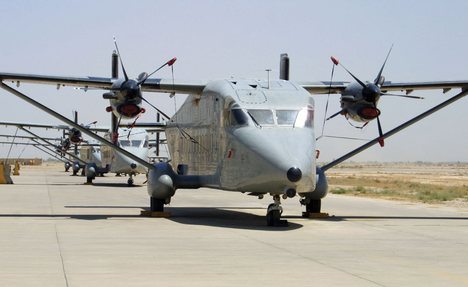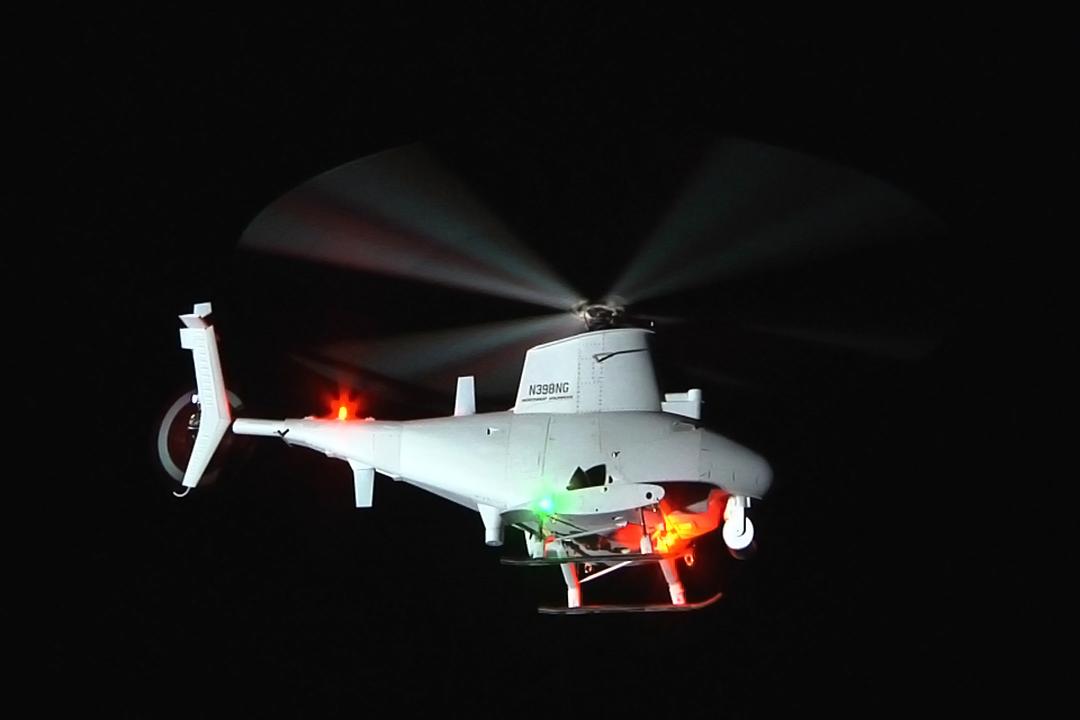Since October 2010, aviators with the Oregon Army National Guard have logged more than 5,000 hours of flight time on their fleet of Sherpa aircraft and have moved more than 2.2 million pounds of equipment and cargo, and transported 10,000 passengers.
The C-23 Sherpa is a military version of the Shorts 360 civilian airliner and first flew for the military in 1982 — then as part of the Air Force. But today, the Sherpa flies for the Army, flying mostly intra-theater missions.
“We use it for transporting passengers and cargo all around Iraq and even down to Kuwait,” said Capt. Adam McCarthy, commander of A Company, 641st Aviation Regiment.
“We supply what is called the last tactical mile,” McCarthy said. “The Air Force gets stuff into the country and we get it out to all the smaller bases in country. We are extremely proficient in getting things and people around the country. We’re like the FedEx of Iraq.”
Since the Sherpa’s arrival in Iraq, it has left an identifiable mark on operations.
“The service that we provide here has definitely made an impact on this whole war. Sherpas have been flying in this war for eight years now, and I think that the whole program has proven itself over and over again,” said 1st Sgt. Scott McCoy, A Company.
The Sherpa program has gone through several modifications in order to be effective in Iraq.
“Back home we fly during the day. Here in Iraq, we fly solely at night,” said Chief Warrant Officer Dan McCarron, maintenance officer and C-23 pilot for A Company.
During McCarron’s 2005 deployment, he said they flew the Sherpa fast and low. But that has changed due to safety reasons.
“We fly only at night (with) night vision goggles,” he said. “Plus, we’ve had to do several modifications to the airframe and instrument panels in order to make it safer.”
With the drawdown of U.S. forces out of Iraq, there are fewer assets to move materiel around the theater of operations. The C-23 has been called upon to fill the gap, McCarron said.
“They prove to be a priceless service here. If something is needed somewhere, if they can move it, they’ll get it there,” said Maj. Tom Stackpole, night operations officer-in-charge for Warrior Operations, 2nd Battalion, 228th Aviation Regiment. “Even though we are drawing down here, stuff and people still need to be moved all the time. (Sherpas) are able to do so in an expeditious manner.”
“They can carry more than a Blackhawk, but less than a Chinook, but the benefit is that they can go for longer distances, faster,” he explained.
The CH-47 Chinook helicopter and the C-23 Sherpa are both used as cargo and troop transports; however, the Sherpa is only operated by the National Guard.
“I used to be a crew chief on a CH-47 Chinook, and now I’m a flight engineer on the C-23 Sherpa,” said McCoy. “We have limitations on what we can haul, but we move as much as we can, as often as we can. The Chinook can haul four times as much as we can, but we can do it quicker and for longer hauls. But both aircraft perform phenomenally and have their own niches.”
Through the usage of the C-23 in Iraq, it has definitely shown that it excels in its field.
“The Sherpa is a very versatile aircraft. We’re able to move our loads under almost any circumstance,” said Sgt. Clint Walker, flight engineer for A Company. “We’ll fly to a location to drop off a single item, like a 15-pound box of blood, or we can load the aircraft to its max and go from there. We’ve been called the ‘Sure Flight Sherpas’, because we get the mission done.”
The nickname Sure Flight Sherpas reflects a high demand for their services.
“They receive a lot of requests for their services, and it definitely keeps me busy,” said Spc. Byron Yates, future operations noncommissioned-officer-in-charge for the 2-228th. “They are a very popular unit. They’re out flying every night, moving people and cargo all over the country.”
“The amazing thing about the Sherpa is that they move a lot of people and cargo, but they also pick up additional space available people and cargo too,” Yates said. “I’ll send them out saying they are going to be moving a certain amount of stuff, and they come back with doubled if not tripled numbers because of all of the Space A they moved that night too, and I’m just left wondering how they did it.”











